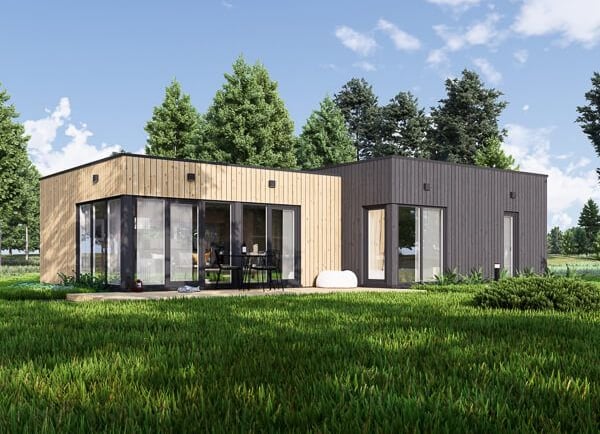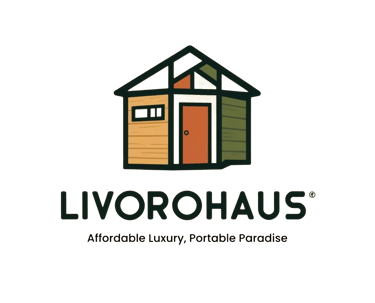Prefab Homes vs Traditional Houses: A Complete Cost Comparison Guide 2025
1/13/20254 min read


Looking to build your dream home in 2025 but torn between prefabricated and traditional construction? You're not alone. As housing costs continue to rise and sustainability becomes increasingly important, more homeowners are carefully weighing these two options. In this comprehensive guide, we'll break down every cost factor to help you make an informed decision that aligns with your budget and lifestyle.
Understanding Your Options: The Basics
Let's start with a fundamental truth: both prefab and traditional homes can offer exceptional quality. The real difference lies in how they're built and what that means for your wallet. Prefab homes are manufactured in climate-controlled facilities and assembled on-site, while traditional homes are built piece by piece at the construction site. But what does this mean for your bottom line?
The True Cost of Construction: Breaking Down the Numbers
When we look at initial construction costs, the differences are striking. A 1,500-square-foot prefab home typically ranges from $135,000 to $225,000 for basic models, while premium versions might reach $325,000. Traditional homes of the same size often start at $225,000 and can exceed $500,000 for premium construction.
But here's what makes this comparison interesting: these base prices don't tell the whole story. Let's dig deeper into what actually affects your wallet.
Material and Labor: Where the Savings Begin
Prefab construction offers some fascinating advantages in material costs. Thanks to bulk purchasing and precise manufacturing, waste is typically reduced to just 5-10% of materials, compared to 15-20% in traditional construction. Think about that – you're not paying for materials that end up in a dumpster.
Labor costs tell an equally compelling story:
"In our factory, we can complete in 200 hours what might take 500 hours on a traditional construction site," explains Sarah Chen, a prefab construction specialist. "This efficiency translates directly to cost savings for homeowners."
Time is Money: Understanding Construction Timelines
Here's where things get really interesting. While a traditional home might keep you waiting for 26-41 weeks, a prefab home can be ready in just 12-20 weeks. Let's break this down into real costs:
Construction loan interest: Less time means less interest paid
Rental costs while waiting: Cut in half with prefab
Weather delays: Nearly eliminated with factory construction
The Hidden Champions: Site Preparation and Utilities
Many homeowners overlook site preparation costs, but they're crucial to your budget. Both types of homes need:
Soil testing ($500-2,000)
Land surveying ($500-1,000)
Site clearing ($1,500-5,000)
Grading ($1,000-3,000)
However, prefab homes might require special considerations like crane access ($1,000-3,000), while traditional homes often need extended equipment rentals and site security.
The Long Game: Operating Costs and Efficiency
This is where prefab homes often shine brightest. Modern prefab construction typically results in homes that are 20-30% more energy efficient than their traditional counterparts. Let's translate that into dollars:
Average Monthly Utilities:
Prefab Home: $150-250
Traditional Home: $200-350
Over 10 years, this difference could save you $6,000-12,000 – enough to renovate a kitchen or install a solar system.
Maintenance: The Numbers Don't Lie
Annual maintenance costs tell an interesting story:
Prefab Homes:
Structure: $500-1,500
Systems: $300-1,000
Exterior: $400-1,200 Total: $1,200-3,700
Traditional Homes:
Structure: $1,000-3,000
Systems: $500-1,500
Exterior: $800-2,000 Total: $2,300-6,500
These differences stem from standardized construction methods and better quality control in factory settings.
Financing: Understanding Your Options
Here's something surprising: financing has become much more straightforward for prefab homes in recent years. While traditional construction loans hover around 4-6% interest, prefab home loans typically range from 5-7%. However, the shorter construction period for prefab homes often results in lower total interest paid.
Consider this example: On a $300,000 construction loan:
Traditional home (9 months): $11,250 in interest
Prefab home (4 months): $5,000 in interestEnvironmental Impact: The Hidden Cost Savings
In 2025, environmental considerations aren't just about being green – they're about saving money. Prefab homes typically generate:
5-10% construction waste vs. 15-20% for traditional homes
Lower transportation emissions due to fewer site deliveries
Better energy efficiency ratings
These factors often translate into tax incentives and lower utility bills, making the environmental choice the economical one too.
Real-World Case Studies: Seeing is Believing
Let's look at two real examples that illuminate the differences:
The Thompson Family's 1,500 sq ft Home
Chose Prefab:
Total cost: $225,000
Timeline: 4 months
Energy savings: 25%
Annual maintenance: $2,000
The Patels' Traditional Build:
Total cost: $300,000
Timeline: 9 months
Standard efficiency
Annual maintenance: $4,000
After five years, the Thompsons had saved nearly $20,000 in combined energy and maintenance costs.
The Martinez Family's 2,500 sq ft Home
Chose Prefab:
Total cost: $375,000
Timeline: 5 months
Energy savings: 30%
Annual maintenance: $3,000
The Johnsons' Traditional Build:
Total cost: $500,000
Timeline: 12 months
Standard efficiency
Annual maintenance: $6,000
Making Your Decision: A Strategic Approach
Consider these key factors when making your choice:
Timeline Requirements If you need to move within six months, prefab construction offers a clear advantage. The controlled factory environment means weather delays won't impact your schedule.
Budget Constraints Initial costs favor prefab homes, but remember to factor in:
Land costs
Site preparation
Utility connections
Long-term operating costs
Location Factors Your location can significantly impact costs:
Local building codes
Climate considerations
Labor market conditions
Transportation access
Long-Term Plans Consider:How long you plan to stay
Potential resale value
Future energy costs
Maintenance requirements
Expert Insights: What the Professionals Say
"The prefab versus traditional debate isn't about which is better – it's about which better suits your specific needs," says Michael Rodriguez, a housing market analyst. "In 2025, we're seeing prefab homes appreciate at 4-6% annually, comparable to traditional homes at 3-5%."
Making Your Final Decision
As you weigh your options, remember:
Prefab homes offer:
Lower initial costs
Faster completion
Better energy efficiency
Reduced maintenance
Environmental benefits
Traditional homes provide:
Maximum customization
Familiar construction methods
Established resale markets
Local contractor relationships
The Bottom Line
In 2025, both prefab and traditional homes offer viable paths to homeownership. Your choice should align with your:
Financial situation
Timeline requirements
Environmental priorities
Long-term goals
Remember, the "right" choice varies for everyone. Consider consulting with financial advisors and construction professionals to align your decision with your specific circumstances.
Looking Forward
As construction technology continues to evolve, the gap between prefab and traditional construction may narrow. However, current data suggests that prefab homes offer significant advantages in terms of cost, efficiency, and environmental impact.
Whether you choose prefab or traditional construction, understanding these cost factors helps ensure you make an informed decision that serves your needs now and in the future.
This comprehensive guide was last updated on January 13, 2025. All costs and estimates are subject to market conditions and location-specific factors. Consult with local professionals for the most accurate pricing in your area.


